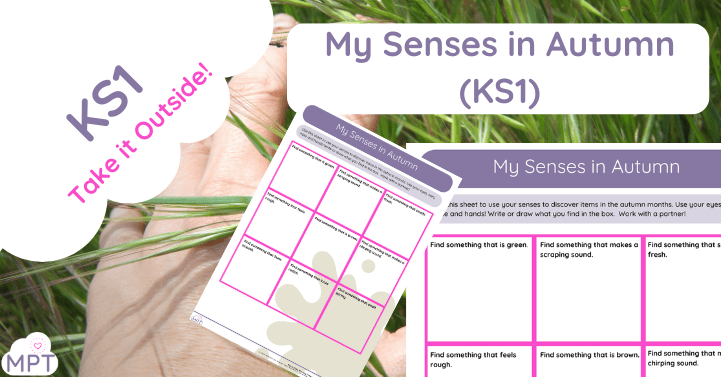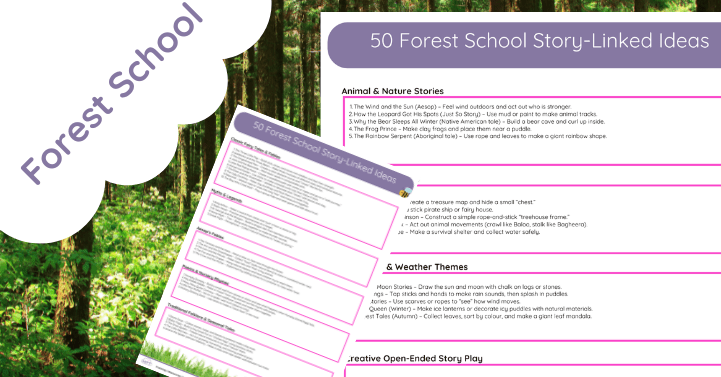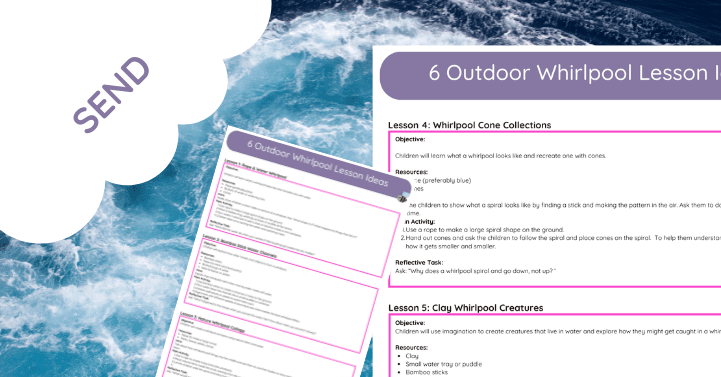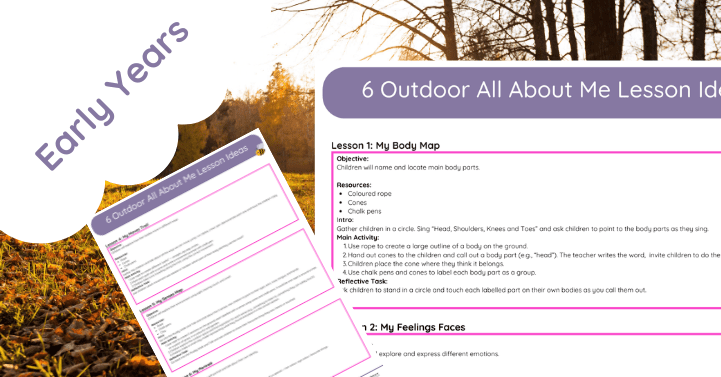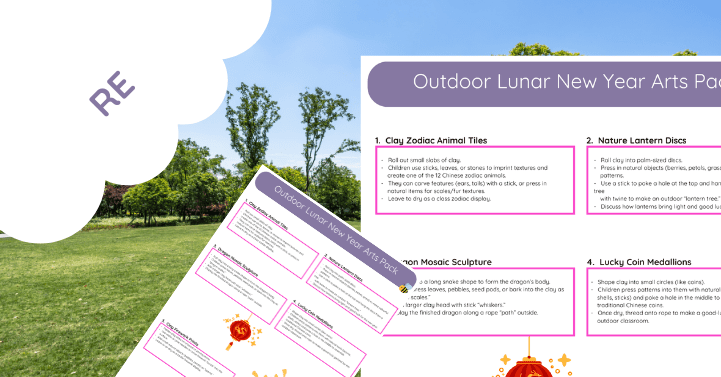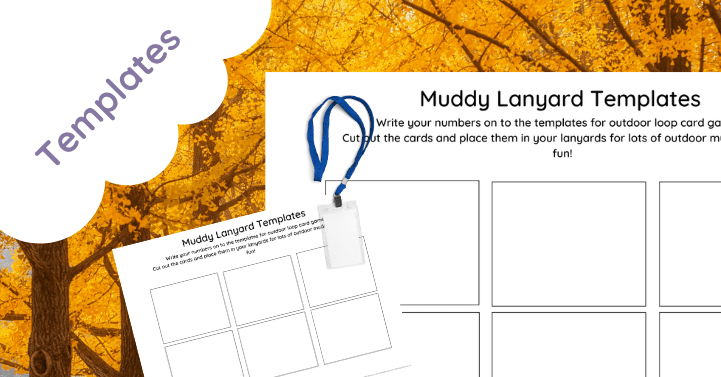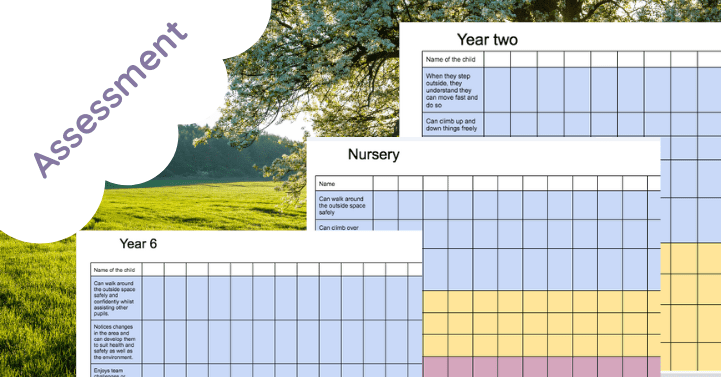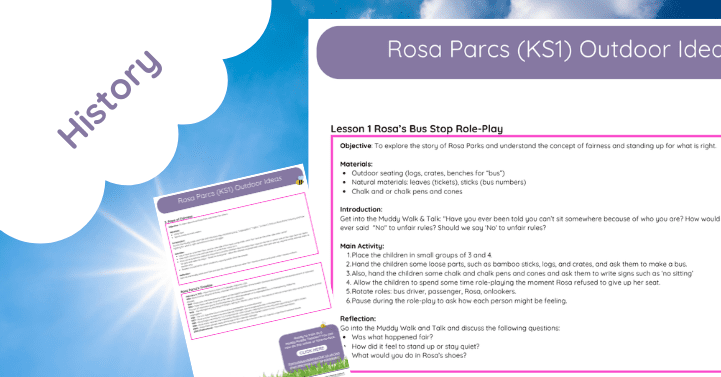My Senses Autumn KS1 Outdoor Worksheet
Bring the magic of autumn to life with our “My Senses Autumn” KS1 Outdoor Worksheet! Designed to encourage children to explore and connect with nature, this worksheet leads young learners on a sensory adventure through the vibrant autumn season. Perfect for outdoor learning, it encourages children to use their senses to observe, record, and appreciate the natural changes around them, fostering curiosity and building descriptive language skills.
Key Features:
- Sensory Exploration: Guides children to use their five senses—sight, sound, smell, touch, and even taste (safely!)—to experience autumn fully.
- Seasonal Learning: Aligned with KS1 science and English curriculum goals, this worksheet is an excellent way to introduce seasonal changes, enhancing knowledge and understanding of the world.
- Supports Descriptive Language: Helps children develop descriptive vocabulary as they observe autumn leaves, feel the cool breeze, hear crunching leaves, and more.
- Hands-On, Engaging Activity: Designed for outdoor learning, this worksheet encourages active exploration and connection with nature, making learning fun and meaningful.
- Ideal for Classrooms or Home: Use it as a class activity, group project, or family outing to turn any autumn day into an educational experience.
This interactive worksheet lets children discover the wonders of autumn through their senses. It’s the perfect tool for bringing the classroom outdoors and fostering a lifelong love of learning and nature! 🍂
The Importance of Children Exploring Their Senses in the Modern World
In today’s fast-paced, technology-driven world, it’s more important than ever for children to have the opportunity to explore and connect with their senses. Sensory exploration allows children to understand their environment, develop crucial cognitive and social skills, and build a strong foundation for healthy emotional growth. However, sensory play often takes a backseat as screens and structured activities dominate modern childhood. In this blog, we’ll discuss the benefits of sensory exploration and share 10 valuable resources for understanding its importance in early childhood.
1. Building Cognitive Skills Through Sensory Play
Sensory play supports cognitive development by encouraging children to explore, experiment, and ask questions. Activities like touching, tasting, and listening help form neural pathways in the brain, which are essential for learning.
According to Pathways.org, sensory play can improve problem-solving skills, enhance memory, and lay the groundwork for complex thinking. Children learn to make sense of the world around them through these sensory experiences, which helps them process information and retain new knowledge more effectively.
2. Encouraging Creativity and Imagination
When children have the freedom to explore their senses, they also develop their creativity. Sensory play provides endless opportunities for imaginative experiences, whether it’s feeling the texture of leaves, creating mud pies, or listening to birdsong.
The National Association for the Education of Young Children (NAEYC) highlights that sensory exploration encourages children to think outside the box, sparking creative ideas that support other areas of development, like language and social skills.
3. Developing Social and Communication Skills
Many sensory activities are best enjoyed with others, which helps children learn teamwork and communication. When children explore sensory materials together, they naturally talk, share, and problem-solve as a group.
According to Zero to Three, sensory play enhances social skills by teaching children to express their observations and feelings. They learn to describe textures, colours, sounds, and more, which improves vocabulary and encourages them to communicate with peers and caregivers.
4. Improving Fine and Gross Motor Skills
Sensory play is also an effective way to strengthen fine and gross motor skills. Actions like scooping sand, pouring water, or feeling textures allow children to refine hand-eye coordination and build muscle strength.
The American Academy of Pediatrics (AAP) emphasizes the role of physical activity in children’s development, encouraging parents to incorporate sensory activities that involve movement and coordination. These skills are essential for tasks like writing, cutting, and even dressing themselves.
5. Reducing Anxiety and Supporting Emotional Regulation
Sensory play has a calming effect on children, helping them self-regulate and reduce anxiety. Activities like playing with sand, water, or soft sensory materials provide children with a sense of comfort and calm, especially when they feel overwhelmed.
According to the Child Mind Institute, sensory activities can help children learn to manage stress, regulate emotions, and feel more grounded. This can be especially beneficial in a world where children are often overstimulated by technology and busy schedules.
6. Developing Resilience and Confidence
Allowing children to explore their senses gives them the confidence to try new things and take risks in a safe environment. Sensory play often involves elements of surprise and discovery, building resilience as children learn to explore and adapt to new experiences.
Harvard University’s Center on the Developing Child explains that resilience is a skill built through positive, hands-on experiences. Sensory exploration teaches children to embrace the unknown, supporting a growth mindset that will benefit them throughout life.
7. Strengthening Connections to Nature and the Environment
In today’s digital world, children are spending less time outdoors, which reduces their exposure to natural sensory experiences. Exploring senses in nature—feeling the texture of bark, smelling fresh flowers, or listening to birds—helps children develop a strong connection to the environment and promotes empathy for nature.
The National Wildlife Federation (NWF) advocates for children to spend time in natural environments, stating that nature-based sensory play encourages environmental awareness and a lifelong respect for the planet.
8. Enhancing Language Development
Sensory play enriches vocabulary as children learn to describe their experiences and surroundings. When children explore different textures, sounds, and smells, they naturally develop descriptive language and express themselves in new ways.
The American Speech-Language-Hearing Association (ASHA) suggests that sensory activities like describing textures, naming colours, and discussing smells provide valuable opportunities for vocabulary expansion and improved communication skills.
9. Fostering Curiosity and Lifelong Learning
Exploring the senses encourages a sense of curiosity that lays the foundation for lifelong learning. Children who are given the freedom to explore are more likely to ask questions, investigate, and develop a love of discovery.
Scholastic Parents explains that children who engage in sensory exploration tend to develop a natural curiosity about their surroundings, building a foundation for inquiry-based learning as they grow older.
10. Supporting Neurodivergent Children’s Development
Sensory exploration is particularly valuable for neurodivergent children, who often benefit from sensory activities that help them self-regulate and process information. Activities that engage the senses can provide a calming effect, improving focus and helping children feel more at ease in their environment.
Understood.org emphasizes the importance of sensory play for neurodivergent children, offering tips for parents and educators on how to create inclusive sensory experiences that support diverse learning needs.
Practical Tips for Encouraging Sensory Exploration
Creating opportunities for sensory exploration doesn’t have to be complicated. Here are some simple ways to encourage sensory play in the modern world:
- Nature Walks: Take children on walks to explore textures, colours, and sounds in nature. Let them feel tree bark, pick up leaves, and listen to birds.
- Gardening: Let children plant seeds, dig in the dirt, and water plants. Gardening is an excellent sensory activity that also teaches responsibility.
- Sensory Bins: Fill bins with materials like rice, sand, water beads, or even dried leaves. Children can use scoops, spoons, and cups to explore different textures.
- Cooking and Baking: Let children smell spices, mix ingredients, and taste their creations. Cooking is a wonderful way to explore multiple senses.
- Music and Movement: Encourage children to listen to different sounds, dance to music, or explore instruments. This promotes auditory and kinesthetic sensory experiences.
Outdoor Continuous Provision Plan for Early Years: “Ourselves” Theme


